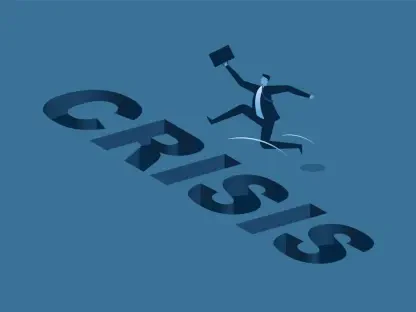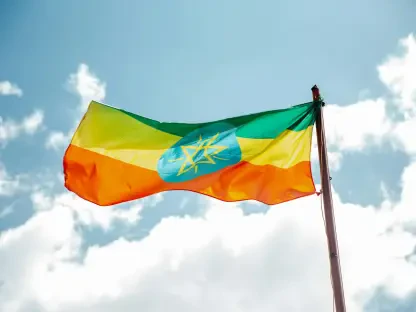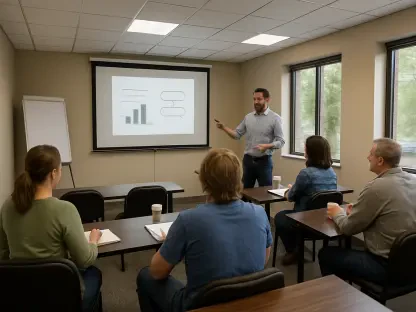The Trump administration’s directive to pause federal funding faced a last-minute judicial block, highlighting the swift legal and institutional response to this controversial administrative decision. The temporary freeze, scheduled to take effect on January 28, 2025, at 5 p.m., was halted by U.S. District Judge Loren AliKhan in Washington, D.C., minutes before enforcement, with a one-week stay. The legal challenge stemmed from a coalition of groups, including the National Council of Nonprofits, the American Public Health Association, Main Street Alliance, and SAGE, represented by Democracy Forward. This decision was seen as a relief to many who were concerned about the immediate impact of the funding freeze.
The Trump Administration’s Directive
Announcement and Scope of the Freeze
On January 27, 2025, the Trump administration announced a broad halt on federal grants, loans, and financial assistance, potentially affecting numerous sectors, including higher education and research. Acting Office of Management and Budget (OMB) Director Matthew Vaeth issued a memo requiring federal agencies to perform a thorough review of their programs by February 10, ensuring alignment with President Trump’s executive orders. The memo explicitly targeted funding for programs related to foreign aid, nongovernmental organizations (NGOs), diversity, equity, and inclusion (DEI), gender ideology, and green new deal policies, categorizing these as wasteful spending of taxpayer money that do not significantly benefit the public.
The directive explicitly highlighted that programs associated with DEI, gender ideology, foreign aid, and green new deal policies should be scrutinized and that funding for such programs was deemed an inefficient allocation of taxpayer money. The memo’s language focused on ensuring that any federal dollars spent must directly benefit the American public and align strictly with President Trump’s policy directives. The breadth of this freeze immediately caused concern among numerous sectors that rely on federal funding to maintain their operations and continue their essential services.
Immediate Reactions and Opposition
The directive met with strong opposition from higher education groups and Democratic lawmakers, who criticized the pause for its broad implications and potential to disrupt critical research and operations in universities. Kara Freeman, CEO and president of the National Association of College and University Business Officers, warned that the freeze would adversely affect students, families, and scientific research. Mark Becker, president of the Association of Public and Land-Grant Universities, and Ted Mitchell, president of the American Council on Education, echoed these concerns, calling for the Trump administration to rescind the directive due to its unnecessary and damaging consequences.
Opposition was not limited to educational institutions; many non-profit and public health organizations expressed significant concern over the potential impacts on essential services. These groups emphasized that the halt could disrupt ongoing projects critical for public welfare, significantly affecting communities relying on these programs. With Democratic lawmakers joining the chorus of dissent, the stage was set for a contentious legal and political battle aimed at overturning the directive, which many argued overreached executive powers and posed a considerable threat to federally funded initiatives vital to the nation’s progress and well-being.
Legal and Institutional Response
Judicial Intervention
The temporary freeze was scheduled to take effect but was halted by U.S. District Judge Loren AliKhan in Washington, D.C., minutes before enforcement, with a one-week stay. The legal challenge stemmed from a coalition of groups, including the National Council of Nonprofits, the American Public Health Association, Main Street Alliance, and SAGE, represented by Democracy Forward. This decision was seen as a relief to many who were concerned about the immediate impact of the funding freeze.
Judge Loren AliKhan’s decision to block the freeze temporarily highlighted the swift judicial response to the controversial directive. The coalition of groups brought forward compelling arguments emphasizing the potential harms and disruptions the funding pause could cause to their operations and services. The judicial intervention provided a brief respite for those affected, allowing organizations and institutions to continue their activities without the immediate threat of lost funding. However, with only a one-week stay, this ruling underscored the need for a more permanent resolution through ongoing legal proceedings.
Legislative and Institutional Actions
Democratic legislators, such as Sen. Patty Murray and Rep. Rosa DeLauro, argued that the directive represented an overreach of executive power and had the potential to cause widespread harm. Several Democratic attorneys general announced intentions to sue the administration to prevent the funding freeze from taking effect, underscoring the tension between the executive branch and the legislative and judicial branches.
These legislative actions were part of a broader institutional response to mitigate the potential fallout from the freeze. Universities, public health organizations, and non-profits began mobilizing resources and preparing legal strategies to challenge the directive. This collective opposition illustrated a unified stance against what many viewed as an encroachment on essential funding streams, which support critical research, public services, and educational opportunities. The legal battles ahead were expected to set significant precedents concerning the executive branch’s authority and the protection of federal funding allocations.
Impact on Higher Education and Research
University Responses
Universities across the country, including Virginia Tech and Arizona State University, scrambled to provide guidance to their researchers and staff. These institutions advised continuing ongoing projects and monitoring budget balances while remaining mindful of the potential for shifts in funding availability. Researchers were also urged to verify deadlines for federal grant applications due to potential changes during the pause.
The swift administrative response from universities illustrated the immediate concerns surrounding ongoing and future research projects. Faculty and researchers at these institutions faced uncertainty regarding their funding sources, necessitating careful planning and oversight to navigate the potential financial constraints. By advising their teams to stay vigilant and proactive, these universities aimed to mitigate the directive’s impact, emphasizing the importance of maintaining operational continuity amidst the anticipated funding freeze.
Disruption to DEIA Programs
The federal funding freeze further impacted research by halting diversity, equity, inclusion, and accessibility (DEIA) programs. The National Science Foundation (NSF) paused all review panels for the week to comply with Trump’s executive orders, causing further disruption. Institutions like Arizona State University instructed researchers to cease all DEIA-related activities immediately, illustrating the wide-reaching effects of the administration’s directives.
The abrupt cessation of DEIA-related activities sparked significant concerns among academic and research communities. These programs, often integral to promoting inclusive and equitable research environments, faced immediate disruption due to the funding freeze. The NSF’s compliance with the executive orders by halting review panels signaled broader implications for federally funded research review processes. Institutions responding to these directives had to navigate the complex and far-reaching consequences, further emphasizing the interconnected nature of federal support and academic research.
Broader Implications and Future Outlook
Ongoing Legal and Political Battles
The judicial stay by Judge Loren AliKhan provides temporary relief but sets the stage for continued legal and political battles over the administration’s efforts to reshape federal funding priorities aligned with the President’s policy objectives. This incident underscores the ongoing tensions and challenges faced by institutions reliant on federal funding amid shifting political landscapes.
The temporary nature of the stay signified that broader legal disputes were inevitable. Stakeholders prepared for intense courtroom battles to secure more permanent rulings that could undo the directive’s potential damage. This legal wrangling was poised to occupy the focus of many institutions, emphasizing the need for adept legal strategies and advocacy to protect interests dependent on federal funding. The evolving situation reflected deep-seated institutional tensions as political dynamics continued to influence critical funding allocations.
Potential Long-Term Consequences
The Trump administration’s directive to freeze federal funding was abruptly halted by a last-minute judicial intervention, underscoring the rapid legal and institutional reaction to the contentious decision. The temporary funding freeze, slated to begin on January 28, 2025, at 5 p.m., was blocked by U.S. District Judge Loren AliKhan in Washington, D.C., just minutes before it was set to take effect, with a one-week stay. The legal challenge was spearheaded by a coalition of groups, including the National Council of Nonprofits, the American Public Health Association, Main Street Alliance, and SAGE, and they were represented by Democracy Forward. This ruling was met with relief by many who were deeply worried about the immediate consequences of the funding suspension. The swift legal action highlights the intense and immediate reactions that federal administrative decisions can provoke, especially those perceived as abrupt or poorly justified by affected stakeholders. This pause provides a much-needed window for further review and discussion.








